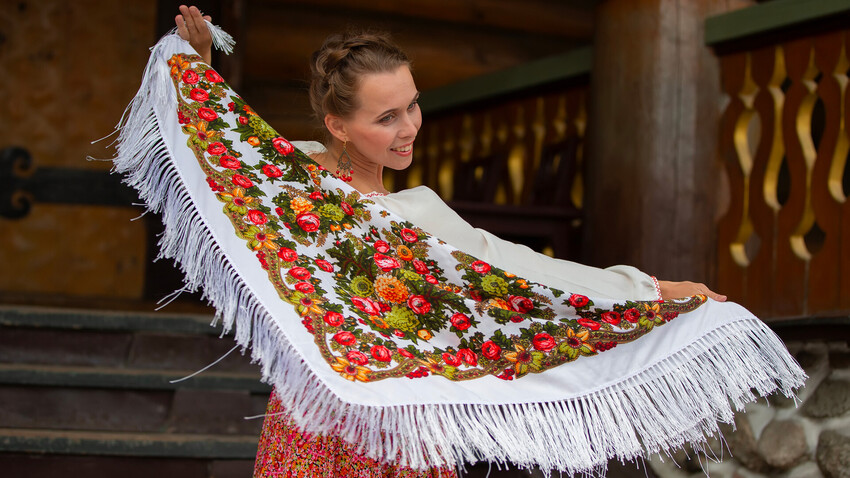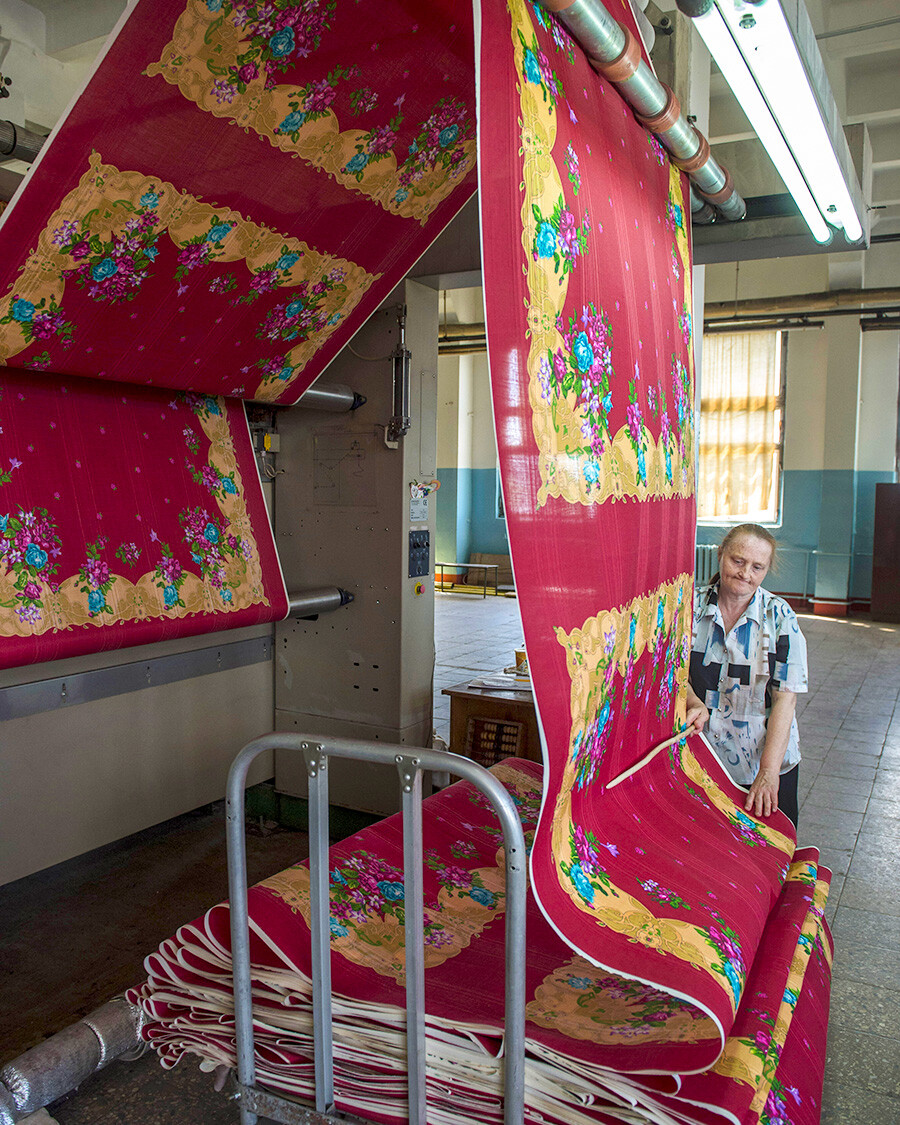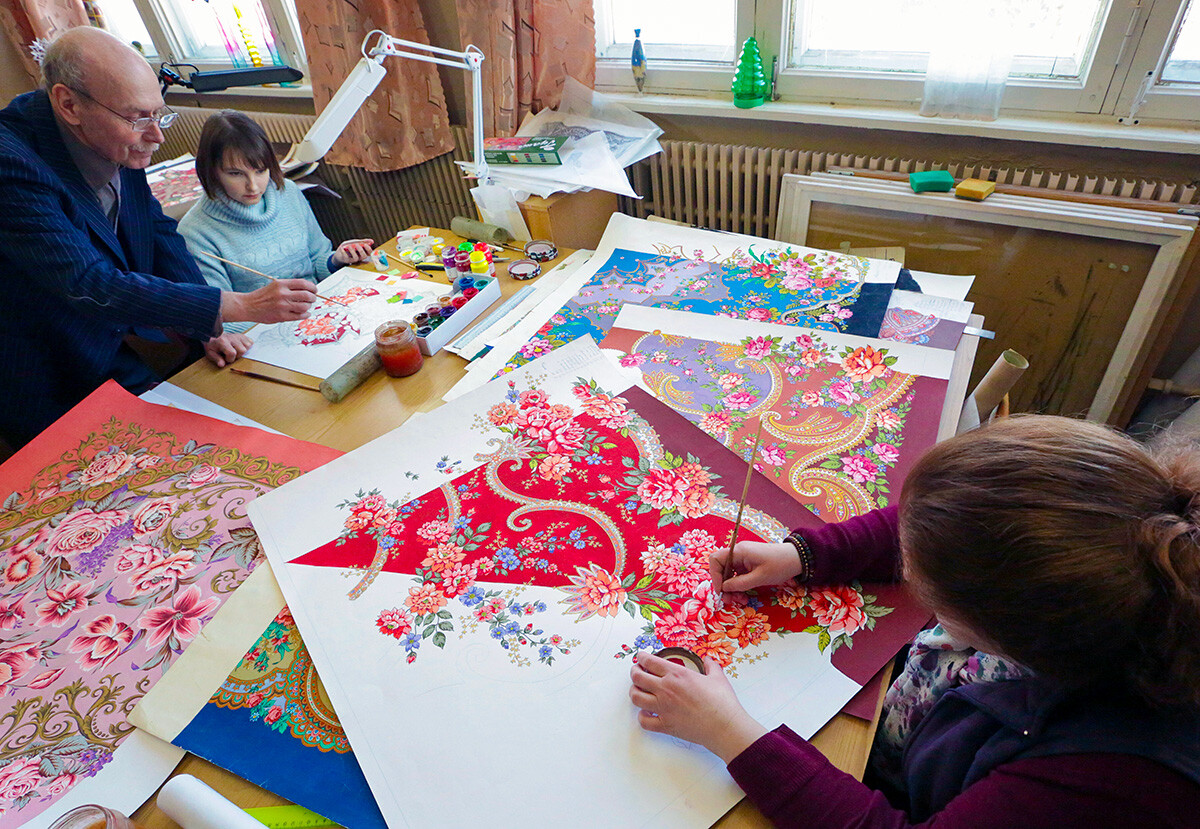
The most recognizable Russian shawls with symmetrical floral patterns have been produced since 1795 in the town of Pavlovsky Posad outside Moscow. These scarves are most often dubbed ‘Russian’ abroad’ and often bought as a souvenir.
Their distinctive feature is the square shape and strictly regulated sizes. Here’s why.

At the Pavlovsky Posad plant.
Grigory Sysoev/SputnikShawls came to Russia from the East and were originally rectangular (like modern shawls). They were handmade and mostly from silk, so only wealthy ladies could afford such a purchase. Gradually, shawls began to become trendy among the nobility and merchant class. Demand for them grew, as well as the number of manufacturers. So, the producers from Pavlovsky Posad decided to beat the competition by producing cheaper woolen shawls with a printed rather than a woven pattern. If you look at the design, you will see that the pattern repeats itself symmetrically. The drawing was applied using special wooden forms and, therefore, the dimensions were standardized. Thus, the price of the Pavlovsky Posad shawl decreased and it became available even to peasants (albeit to prosperous ones!).

At the Pavlovsky Posad plant.
Artem Geodakyan/TASSToday, patterns are already applied with a laser; if the pattern is very complex, then manually. However, the main color of the handkerchief appears only at the very end of the work, after steam treatment, which fixes the dyes.
By the way, until recently, the background was only black, white and light, all other colors appeared only in the 20th century.
Dear readers,
Our website and social media accounts are under threat of being restricted or banned, due to the current circumstances. So, to keep up with our latest content, simply do the following:
If using any of Russia Beyond's content, partly or in full, always provide an active hyperlink to the original material.
Subscribe
to our newsletter!
Get the week's best stories straight to your inbox